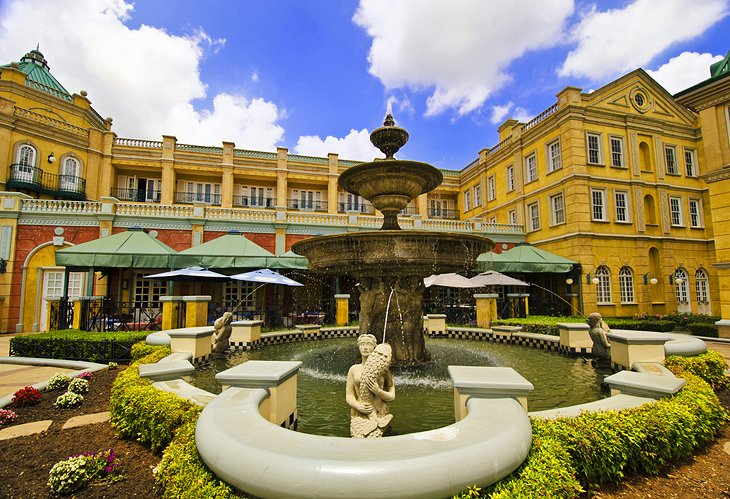All about Johannesburg North Attractions
Table of ContentsThe 8-Second Trick For Johannesburg North Attractions7 Simple Techniques For Johannesburg North AttractionsHow Johannesburg North Attractions can Save You Time, Stress, and Money.Johannesburg North Attractions Fundamentals ExplainedOur Johannesburg North Attractions IdeasThe Buzz on Johannesburg North Attractions
The city grew on the edge of the Witwatersrand Key Coral reef, a subterranean stratum of gold-bearing quartz-silica corporation that arcs for hundreds of miles underneath the Highveld - Johannesburg North attractions. Many of the gold mines in the city stopped procedure in the 1970s, yet in its day the Witwatersrand gold market accounted for even more than 40 percent of the globe's yearly gold manufacturing.Johannesburg has a temperate climate. Summer temperatures average regarding 75 F (24 C); winter temperatures average concerning 55 F (13 C) and just periodically dip listed below cold. The city delights in about eight hours of sunshine daily in both winter and summer. Rainfall standards concerning 28 inches (700 millimetres) per annum, but the overall varies considerably from year to year.
What rainfall the city receives drops virtually specifically in the summertime, commonly in incredible late-afternoon electrical tornados. Air air pollution positions a significant issue, especially in the winter season months, when thermal inversions restrain the westward flow of air from the Indian Ocean. Air pollution is most extreme in the densely worked out Black towns on the city's periphery, where lots of citizens still depend on coal for fuel.

The Of Johannesburg North Attractions
The equilibrium of the city is inhabited by whites. Lodging varies in personality and top quality.
Physical development, although somewhat restricted by transport, continued quickly as immigration to South Africa, and Johannesburg in specific, increased considerably.
The majority of poor residential areas were mixed, with bad blacks and whites cohabiting, although the well-off suburbs were normally scheduled for whites. This transformed with the election of the National Celebration in the 1948 elections, that began to formalise the system referred to as racism. Discrimination officially designated which suburban areas each race could stay in under the Team Areas Act.
The previous system of eleven phoned number areas was reorganised in 2006. Marshalltown, as seen from the top of the Carlton Centre. The M1 and M2 run behind the structures, and the southerly suburbs prolong past the highway border. The inner city of Johannesburg lies within the city's Area F. The number of people living in the internal city on an informal basis is unidentified, as many are unlawful immigrants. The joblessness, education and learning, and age profiles of the location are all unknown, due to the difficulty of acquiring dependable info concerning the location.
Johannesburg North Attractions Fundamentals Explained
Centred on the CBD, the region includes the residential areas of Yeoville, Bellevue, Troyeville, Jeppestown, and Berea to the eastern. To the west it infects Pageview (Johannesburg North attractions) and Fordsburg. There are little industrial parks to the south, such as City West-Denver and Benrose. Around 800,000 travelers travel through the inner city each day, and it functions as a regional buying node for site visitors from the southerly residential areas. Yeoville and Bellevue have a mix of home buildings and single household systems on small great deals. The region lies on a hilly divide that ranges from east to west. The most conspicuous geographical attribute is Observatory Ridge, which is called for the large observatory located on it. The entertainment rooms are no more used, because of protection troubles.

Johannesburg Arena, a training school for both the Golden Lions and Orlando Pirates, is adjacent. The eastern residential areas of Johannesburg lie in the city's 7th [] and 9th [] regions. The location is also functionally integrated with East Rand boundary towns outside of the official limit of Johannesburg, such as Bedfordview and Edenvale (both part of Ekurhuleni Metropolitan Town).
The Only Guide to Johannesburg North Attractions
R. Tambo International Flight Terminal). The eastern suburban areas are some of the earliest locations of Johannesburg, there are huge areas of Jewish and various other European histories, the majority of the populace is English talking. There are three fairway along with a variety of safeguarded ridges with viewsites. There are several strong and up-market entertainment and purchasing locations in the east such as the Eastgate Mall and the Greenstone purchasing centre.
Initially constructed to house male migrant employees, several have been boosted as houses for couples and households. The this website residential area was not historically permitted to produce work centres within the area, so nearly all of its residents are commuters to various other components of the city.
6 Easy Facts About Johannesburg North Attractions Shown
The N1 Western Bypass connects the northern suburban areas with the north-western residential areas. The suburbs in the northern residential areas are mainly official, with no substantial areas of casual housing, or real estate that does not have a long-term framework. This is a well established area, there is a fad of land usage modification from domestic to business, specifically along primary arterial roads and around well-known nodes.
Roadways to the east and west are less well established, as there are no freeways taking a trip in that direction. Towards the north border of the city, the thickness of development reduces, leaving huge linked here locations of undeveloped land around Midrand.
The Main Principles Of Johannesburg North Attractions
The very first suburban area to the north of the internal city is Parktown, which is located on a hill overlooking the inner city and Hillbrow. It has many rich locals and Edwardian-design estates, in addition to the Education and Medical schools of the University of the Witwatersrand. The big concrete Charlotte Maxeke Johannesburg Academic Health Center controls the horizon of Parktown.